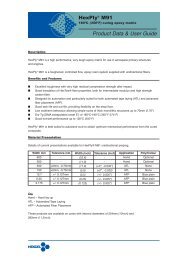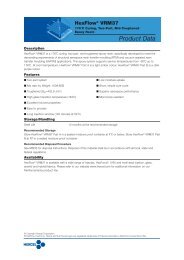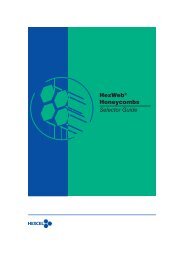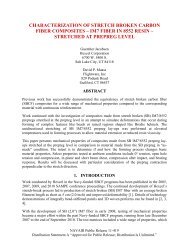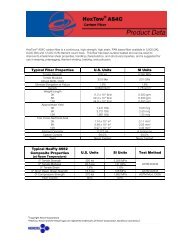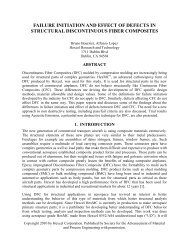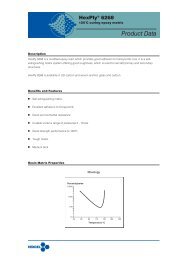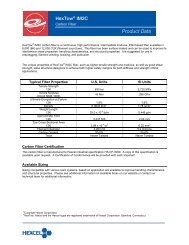HexForce® US Technical Fabrics Handbook - Hexcel.com
HexForce® US Technical Fabrics Handbook - Hexcel.com
HexForce® US Technical Fabrics Handbook - Hexcel.com
You also want an ePaper? Increase the reach of your titles
YUMPU automatically turns print PDFs into web optimized ePapers that Google loves.
Coated and Laminated <strong>Fabrics</strong><br />
High strength, dimensional stability, fire resistance and<br />
low cost are some of the advantages of using fiber<br />
glass fabrics to reinforce foils, plastic film and coatings.<br />
Protective covers, vapor barriers, window shades, movie<br />
screens, packaging tapes, awnings, protective clothing,<br />
gaskets, wall covering and conveyor belts are just some<br />
of the products that are improved through the use of fiber<br />
glass fabrics.<br />
Thermal Insulation<br />
Strength retention at high temperatures, corrosion and<br />
fire resistance, and ease of handling make fiber glass<br />
fabrics an important material for thermal insulation. Both<br />
the U.S. Navy and <strong>com</strong>mercial shipyards use fiber glass<br />
fabrics almost exclusively as pipe lagging and for thermal<br />
pad covers.<br />
Construction<br />
From pipe wrap to wallboard seaming tape, fiber glass<br />
fabrics can be found throughout the construction industry.<br />
Fiber glass scrim is used to reinforce paper and film for<br />
insulation facings and to provide dimensional stability to<br />
asphalt used on roofing, roadways and bridge decks.<br />
Fabric structures such as tennis courts, sports centers<br />
and football stadiums use coated fiber glass fabrics as<br />
an economical way to encapsulate space.<br />
45





